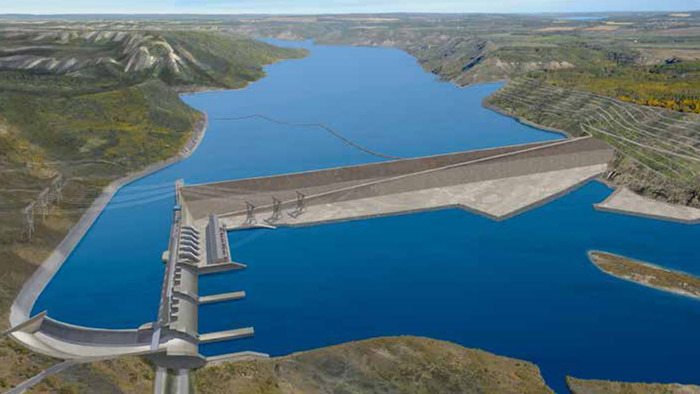VICTORIA – The fall session of the B.C. legislature petered out two days early last week, as the ruling B.C. Liberals and the opposition NDP agreed to turn out the energy-efficient lights and head for home.
NDP leader John Horgan skipped the last day and headed to the B.C. Institute of Technology campus in Burnaby. There he announced “PowerBC,” billed as the NDP’s “bold, progressive plan for the future of B.C. energy, with a strong focus on jobs.”

Reporters asked, how many jobs? Horgan said retrofitting public buildings and homes for energy efficiency would create jobs all around the province, but he can’t say how many.
How much does the plan cost, and does it include subsidizing homeowners to fix their windows and insulation? “The costing will be more apparent when we get closer to the election,” Horgan replied.
Whatever the cost, the NDP plan apparently rests on the assumption that the $9 billion Site C dam project on the Peace River can be stopped by an NDP government after the 2017 election. That money would be used to build wind and solar generation, and to install a sixth and final water turbine at Revelstoke dam.
The chances of Site C being stopped are approaching zero. Construction of an access road started two months ago, site clearing and work camp construction a month before that. Energy Minister Bill Bennett says the main dam construction contract will be let shortly, followed by the powerhouse contract next year.
Horgan said remaining legal challenges could slow or stop the project.
The West Moberly and Prophet River First Nations have lost their case against Site C twice, in the B.C. Supreme and Federal Courts, and are appealing. The Doig River and McLeod Lake Indian Bands dropped their challenges, and McLeod Lake’s construction company has started work on a Site C contract.
West Moberly Chief Roland Willson staged a dramatic protest at the legislature last spring, bringing a cooler of frozen bull trout from a river below the two existing Peace dams, telling media they were too contaminated with mercury to eat.
Flooding land for hydro dams does elevate methylmercury levels in water, but BC Hydro provided me with the latest study that included fish samples collected by West Moberly members. It shows average methylmercury levels remain below federal guidelines for limiting consumption of commercially sold fish.
It’s an odd coincidence that Willson suddenly made this claim, 47 years after the first Peace dam was completed, when he happened to be in court trying to stop Site C.
A coalition of U.S. and Canadian environment groups is also demanding that Site C be stopped, using typical arguments to appeal to their low-information donor base. According to the Sierra Club and others, Site C is not renewable energy because the (largely idle) farmland it floods is a “carbon sink.” Forests do store carbon, albeit temporarily, but farmland where the trees have been cleared? This is gluten-free gobbledegook.
They also trot out the claim that Site C will be used to power liquefied natural gas operations. Most proponents so far have said they will use gas for LNG processing, and if they don’t have hydro available for ancillary power, they will have to burn more gas.
BC Hydro has just finished its latest grid upgrade, a second high-voltage transmission line from Merritt to Coquitlam. It adds disaster reliability to the system that brings power from the Peace and Columbia dams to the Lower Mainland.
If you’re arguing that hydroelectricity isn’t renewable power, you’ve already lost.
Tom Fletcher is legislature reporter and columnist for Black Press. Email: tfletcher@blackpress.ca Twitter: @tomfletcherbc
